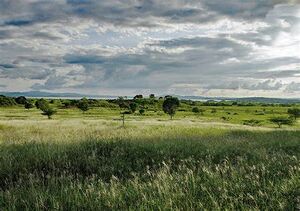Battle of Pais au DuBord
This article is incomplete because it is pending further input from participants, or it is a work-in-progress by one author. Please comment on this article's talk page to share your input, comments and questions. Note: To contribute to this article, you may need to seek help from the author(s) of this page. |
| Inyurstan Civil War | |||||||
|---|---|---|---|---|---|---|---|
| |||||||
| Belligerents | |||||||
|
| Template:Country data commieinyursta AVI | ||||||
| Commanders and leaders | |||||||
|
|
Template:Country data commieinyursta Generále Luis-Vega Machaude | ||||||
| Strength | |||||||
|
x6,450 Troops |
x8,200 soldiers | ||||||
| Casualties and losses | |||||||
|
| ... | ||||||
The Battle of Pais au DuBord was a large engagement in the Inyurstan Civil War, considered by many to be a major "turning point" in the war. It was also notable for being the largest armored engagement of the conflict, and until the 2006 Battle of Nun's Glade the most successful armored operation in Inyursta's history.
Background
Despite the progress of the last three years of the conflict, Colonel Enrique Javez the de-facto leader of forces in Marindino, was facing both international and internal pressure to prove that his army was capable of "escalating" from a guerrilla war into a conventional war. Javez sought to demonstrate that his faction could not only capture territory and cities, but also command a standing army capable of defending whatever gains they might have when the war ends.
Prior to the operation, Javez's right-hand man in the western foothills of the Sierra Miraco Jean-Lupo Pascèses, had spent months studying the reaction tactics of AVI forces in Marindino, using "probing" skirmishes in a variety of different localities and formations to gain an idea of the enemy's doctrine. He had also pitched the hunch to Javez that enemy tank forces were not well trained or experienced in combat - or well equipped for night operations. Pascèses's regiment had tanks of their own, which had taken them weeks - if not months - to properly understand and utilize; while the enemy was seemingly rolling tanks off of foreign ships and right into contested cities. Other ACRI commanders cautioned against this assumption, believing that this was due to the enemy using foreign tank crews. Javez, under pressure, ultimately decided to trust Pascèses.
Planning for the Battle
By January 1961 it had become apparent that, despite the optimistic wishes of Carmòn Solévereu, the AVI would be hard-pressed to both lay siege to Cordoba and relieve the defenders of Fjordia de Rivera. Counter-revolutionary aligned spies had indicated that Solevereu was still pushing for a "relief corridor" between both cities, and soon after the intel would be confirmed by offensives from both the western side of Fjorda and the easternmost forces encircling Cordoba that they were trying to link up in the "prairie corridor" - a series of semi-flat grasslands dominating the "table top" slopes at the foothills of the mountains. With internal politics and external pressure mounting, Javez realized this would be his chance to hopefully engage and destroy an enemy army group in the field.
